News & Articles
Browse all content by date.

“According to the Denali bus driver’s manual, hitting a snowshoe hare will only ‘produce a momentary loss of traction,’” quoted our bus driver, Drew, over his microphone. We’d been watching bunnies dart across Park Road on the way into Camp Denali. “During highs in the population cycle,” Drew continued, “they’re so abundant on the roads that it’s hard to miss them all.”
Scientists as well as drivers across Alaska are quite aware that hares numbers are on the rise. In Denali National Park, the last peak in their 9-to-11 year cycle occurred in 2009. Since 2012, wildlife biologists with the National Park Service have been keeping track of hare numbers through a particularly kid-friendly method.
“We can’t just walk out there and say ‘hey animals, come out, I want to count you,” explained Denali National Park’s wolf technician, Kaija Klauder, to a group of high school students from Anchorage who were attending a summer science camp. “Luckily,” she continued, “all animals poop, and that’s awesome for science.”
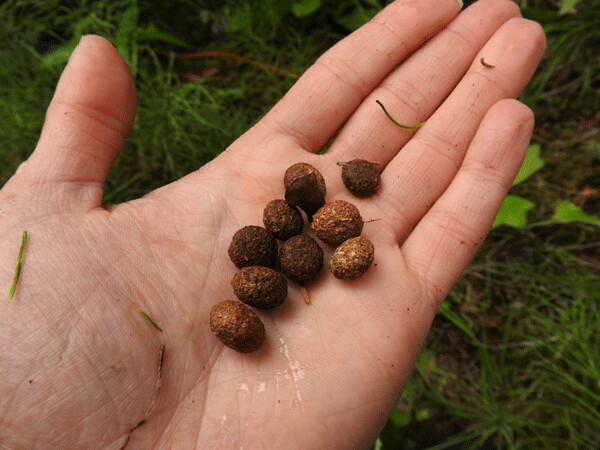
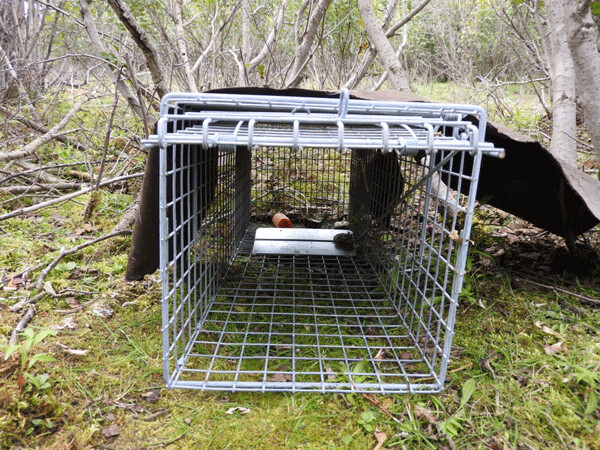
Pellet surveys can be tedious, so I was impressed by how enthusiastically the kids began their work. Park scientists have established 8 different grids of 100 plots apiece. Within each plot, a pair of counters was tasked with finding every small, brown, Skittles-shaped hare pellet, marking it on the data sheet, and then tossing it away from the plot so that it won’t be counted twice. The one-foot-radius plots I helped count had at least 15 pellets each, and some kids found over 100 pellets in a single plot. That seems like a lot, and it is more than they’ve found during the past four years. Back in 2012, though, three years after the previous high in the hare population, pellet counts were 50 percent higher than this year. It’s impossible tell when the population peaks until it starts going down, but it seems like they have room to grow.
Looking for the pellets gave us all a closer look at the moss, moose poop, fungal mycelia, mushrooms, and beetles inhabiting both a spruce forest and a willow thicket. We found a moose bed in the moss, too, and admired flowers in the spongy tundra. Who knows what other subconscious observations the students made with their noses to the ground? Science has a way of sneaking up on you. Studying one organism leads to questions about others, and just crashing around in the woods for a few hours inputs data into our personal sensory computers.
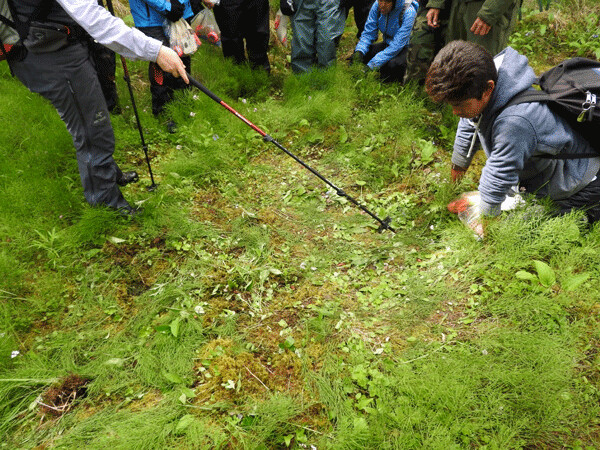
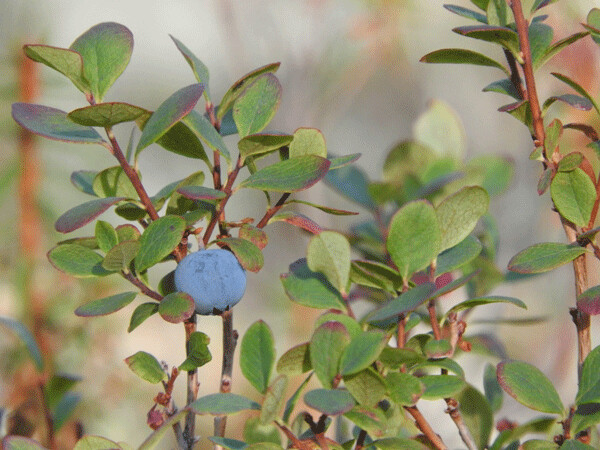
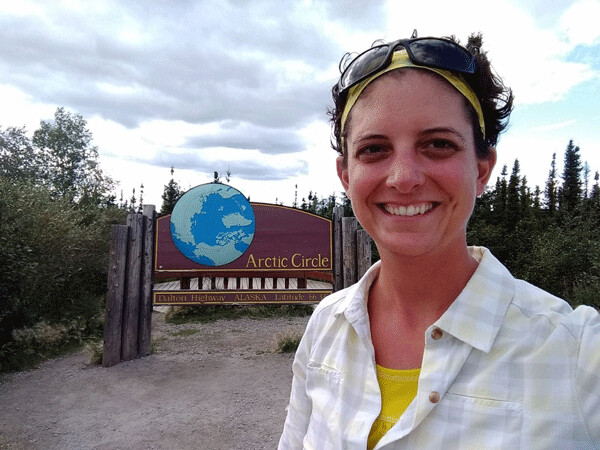
About a month later, in mid-August, I joined Claire Montgomerie and Matt Kynoch, two graduate students from the University of Alaska Fairbanks, to help with their snowshoe hare fieldwork. They are partnering with the National Park Service near the tiny town of Wiseman in the southern foothills of the Brooks Range.
Just as in Denali, we saw plenty of hares along the Dalton Highway as we drove north from Fairbanks. I was mesmerized by the rolling expanses of boreal forest and the undulating silver stripe of pipeline that mostly paralleled the road. For me, this wasn’t just an exciting opportunity to help with research; it was an excuse to explore new landscapes in The North. At the sign marking the Arctic Circle—66.33 degrees north latitude, I took a selfie with a huge grin. I love going North.
I was still smiling the next morning as we wound through soft green hills and along the silvery braids of the Koyukuk River to access two different research sites established by the biologists from Gates of the Arctic National Park. Along one rutted gravel road we set 14 live traps baited with alfalfa cubes and carrots. Firmly compacted moss in the hares’ runs and dense clusters of brown pellets indicated good spots to place the traps. Claire pointed out exposed dirt on the road cuts where hares have been recorded coming to lick the soil. Our goal there was to recapture hares who had been previously deployed with GPS collars to track their use of the mineral licks.
Next we parked at a pipeline access road and walked in to a trap grid used for mark-recapture surveys. There we spent a couple hours finding, baiting, and setting over 30 traps at established locations. We also picked handfuls of tart, red highbush cranberries, savored the sweet treats of dwarf raspberries, and admired the luminous white flowers of bog-star. After dinner, we ambled through thick beds of moss and lichen behind our bunkhouse and picked blueberries until dark.
I’d been seeing and hearing about the population dynamics of snowshoe hares since I arrived in the Alaskan interior. I was thrilled to find an opportunity to learn more, and to experience research firsthand. Now that I was actually up in the Brooks Range, the side benefits of fieldwork were becoming clear. What would the rest of the week bring? I fell asleep dreaming of blueberries and bunnies.
Emily is in Alaska for the summer! Follow the journey in this column, and see additional stories and photos on her blog: http://cablemuseum.org/connect/.
For 50 years, the Cable Natural History Museum has served to connect you to the Northwoods. Come visit us in Cable, WI! Our new exhibit: “Bee Amazed!” is open.
| Tweet |


